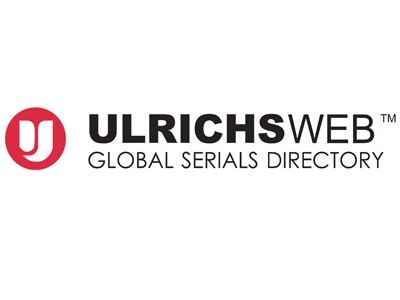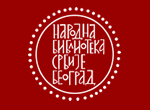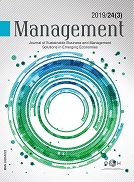Author Guidelines
AUTHOR GUIDELINES PDF file with figures and tables
Additional information for Authors
Title of the Paper in English
(two lines at the most)
Please DO NOT directly identify yourself/yourselves as author/authors in the text in order to enable double-blind peer review. Author(s) details must be entered during paper submission online http://management.fon.bg.ac.rs/index.php/mng/about/submissions .
This document presents a template for preparing the camera-ready papers that will be included in the Journal.
Abstract (maximum 350 words): The abstract should briefly summarize the submitted paper, and help the reader to quickly acknowledge the paper in general.1 Specific parts required in the structured abstract are described as follows.
Research Question: (15-25 words) In one sentence, define the key features of the research question (in “neutral” language – do not presume existence or direction of the relationships). Motivation: (90-120 words) In a few sentences, capture the core scholarly motivation for the study. If relevant, identify a ‘puzzle’ that this research aims to resolve. Identify up to 3 key papers upon which the research builds. What’s New? Highlight where novelty exists in the study; how does it improve or build on existing literature? So What? Outline the primary reason why it is important to know the answer to your research question. Idea: (40-60 words) Articulate the core idea behind the research – what specifically does the study do? If relevant: articulate the central hypothesis; highlight key independent variables and dependent variable(s). Data: (30-50 words) Provide an overview of what data were collected/analysed/used in the study; including data source(s), time period, sample size and measurement tool(s). Tools: (30-50 words) Provide a brief summary of the empirical framework, research design and approach. Findings: (60-80 words) Highlight the key takeaway points. Highlight any novel result - how do the findings agree/disagree with existing literature? What do the findings add? Highlight any important implications this research has for influence in real-world decisions/behaviour/activity. Contribution: (15-25 words) Outline the primary contribution of this paper to the relevant research literature.
An example of abstract
To help authors contextualise this worked example, this abstract is “reverse engineered” from Milinković, I., Kovačević, I., & Mihailović, D. (2017). What Do Freshmen Want? Career Path Preferences Among Students, Management: Journal of Sustainable Business and Management Solutions in Emerging Economies, 22(1), 37-45.
A specific example of the structured abstract is shown below:
Research Question: This paper investigated whether a relationship exists between students’ life goals and preferences for future career type, specifically in entrepreneurship. Motivation: Our goal was to explore if there exists a strong link. If this were the case – if entrepreneurial orientation was pre-destined before University - entrepreneurial education for a wide range of students may be rendered ineffective. The paper draws on both Goal Setting Theory (Locke & Latham, 2006) and Self Determination Theory (Deci & Ryan, 2008), applying them to the context of intrinsic and extrinsic goals (Kasser & Ryan, 1996) among students with preferences for entrepreneurship or management. The study builds on existing literature by distinguishing the difference between intrinsic and extrinsic goals, creating a more rigid structure with which to measure individual goal orientation. Idea: The core idea of this paper was to empirically evaluate the relationship between intrinsic/extrinsic life goals and chosen career path. The study was conducted using gender, department and career path as independent variables and measured the distinction between extrinsic and intrinsic life goals. Data: Analysis was conducted using responses to 384 surveys completed by first year Serbian students in semester one of 2016/2017 at the Faculty of Organizational Sciences. Students identified gender, department and career path. Tools: Statistical analyses of all collected data (Utilizing ANOVA, t test, C coefficient, linear correlation analysis and cluster analysis) were used to draw conclusions about the relationships between variables, particularly the correlation between life goals and career preference. Findings: This study eliminates endowed life goals as a factor in predicting which freshmen would be prone to entrepreneurship as a career, even after considering gender and choice of department (field of study). It suggests that there may be other variables worth considering, such as individual differences and education. It also highlights the potential role for education and development, in order to foster the next generation of Serbian entrepreneurs. Contribution: This paper expands existing research related to the life goals and entrepreneurial career path and formulates practical suggestions for higher education of future entrepreneurs.
Keywords: 5-7 keywords that identify the core of your paper
JEL Classification: The article should follow the Journal of Economic Literature classification system (JEL), in one or several categories. All relevant code(s) must be shown here. Click here for JEL classification
Please note that abstract and keywords in the paper should be identical with abstract and keywords you enter when you submit the paper online. You can copy/paste abstract text and keywords. Please copy keywords to the web form one expression at a time, not all at once.
NOTE: The abstract structure was developed by the 2017 Winter Research Student Scholars and editors of „Management: Journal of Sustainable Business and Management Solutions in Emerging Economies“, under the leadership and direction of Professor Robert Faff, based on the existing “Pitching Research” template tool explained in the SSRN paper online (Faff, 2017) [Faff, R.., (2017), “Pitching Research”, Available at SSRN: http://ssrn.com/abstract=2462059]. This paper provides detailed guidance and gives a very useful summary of the idea in Figures 2 and 3, at the end of the paper.
1 Introduction
Paper must be written in UK English. If English is not your first language, please ask an English- speaking colleague to proofread your paper. Papers should be typed using Microsoft Word for Windows, versions above Word 2000 or other compatible software.
Paper should be between 2500 and 5000 words in length (approximately 8 pages, including text, figures, tables, references list and appendix). If your paper exceeds this limit, please discuss the appropriateness of the length of your manuscript with the Editor-in-Chief before you submit the manuscript. Page format 210x280mm. Allow 2cm for the left and bottom margins, 4cm for the right and 3cm for the top margin on a page. Within paragraphs spacing is single, and please use empty line after the paragraph, and before and after numbered subtitles. For text formatting, you should use font Arial.
By submitting the article to the journal authors agree to allow to all users to read, download, copy, distribute, print, search, or link to the full texts of the articles in this journal without asking prior permission from the publisher or the author. The submitted papers are assumed to contain no proprietary material - responsibility for technical content and for protection of proprietary material rests solely with the author(s) and their organizations and is not the responsibility of the journal, its publishers or its editorial staff. It is the responsibility of the author(s) to obtain all necessary copyright release permissions for the use of any copyrighted materials in the manuscript prior to the submission. The main author, either first or corresponding, is responsible for ensuring that the article has been seen and approved by all the other authors.
2 Composition
In the first row of the first page of the paper, below the space reserved for header, you should type the paper title. Please DO NOT identify yourself in this template. Authors should not make themselves recognizable in the text in order to enable double-blind peer review. If you need to reference to your previous papers or other your work, keep citation in the reference list unchanged but please do not directly identify yourself through in-text reference. Do not use, e.g. formulations like “In our previously published research (Smith, Peterson and Stevens, 2016)”, or “My research on that topic (Ewan, 2017)”, because reviewer can then easily conclude your identity. Instead use third person and do not identify the result as yours, e.g. “In his paper, Petrovic (2017) finds similar results”. Also, avoid excessive and unnecessary self-citations.
Formatting
For text formatting, you should use the following sizes of font Arial:
- Paper title 24 pt
- Abstract 10 pt
- Key words, 10 pt bold
- Numerated first level subtitles 10 pt bold
- Numerated second level subtitles 10 pt bold
- References 10 pt
- Text 10 pt
For formatting of the rows with equations, you should use 'Equation editor (Insert/Equation) in Microsoft Word or MathType. Equations should be numbered using italic numbers in brackets numbering aligned to the right.
3 Figures
All illustrations, whether diagrams or photographs, are referred to as Figures. Name and numeration of figures should be centred on the line below the figure. Use captions - right click on the picture, option insert caption in Word 2007. Figures should be provided in 300 dpi resolution or above in order for quality of printed content to be acceptable. Figures should be uploaded as separate files named Figure 1, Figure 2 etc. in tiff, jpeg or other similar format.
4 Tables
Table name and numeration should be written above the table, at the beginning of the line, as shown in this instruction. Use captions - right click on the table option insert caption in Word 2007.
5 Conslusion
Papers for Management journal should be submitted on-line at Manuscript Central
Acknowledgements
Acknowledgements, if any, should appear at the end of your article. All contributors who do not meet the criteria for authorship should be listed in an Acknowledgements section. Examples of those who might be acknowledged include a person who provided purely technical help, writing assistance, etc.
Where the research was supported by agency, authors should write a funding acknowledgement in the following form, with the funding agency written out in full:
This research study has been supported by the Republic of Serbia’s Ministry of Science and Technological Development, Program of Basic Research 2011-2014 project III47003, “Infrastructure for Technology-Enhanced Learning in Serbia”.
References
Please transcribe letters in the reference list to Roman Latin alphabet, e.g. ć,č->c, š->s, ž->z to ease the automatic citation counting. If any need occurs, please refer to the Publication Manual of the American Psychological Association (6th ed.), http://www.apastyle.org/manual/index.aspx for more information. Authors are strongly advised to use adequate literature when possible, preferably articles, from leading indexed journals, like Clarivate JCR list, and references should cover recent findings 2-5 years when possible. Average article should include 30-50 references, but the number of references is not the only indicator of quality of literature review. Authors must restrain from citing irrelevant work, regardless of the intent. References in the list of references must all be included in the text and vice-versa. If the referenced article has DOI number, authors must add that number to the reference, like in given example.
References should be gathered together at the end of the main body of the text in alphabetical order by author. Authors are strongly advised to follow APA referencing style (6th edition). The American Psychological Association reference style uses the Author Date format.
In text
Direct quotation – use quotation marks around the quote and include page numbers Samovar and Porter (1997) point out that "language involves attaching meaning to symbols" (p.188).
Alternatively, “Language involves attaching meaning to symbols" (Samovar & Porter, 1997, p.188).
Indirect quotation/paraphrasing – no quotation marks
Attaching meaning to symbols is considered to be the origin of written language (Samovar & Porter, 1997).
N.B. Page numbers are optional when paraphrasing, although it is useful to include them (Publication Manual, p. 171).
Citations from a secondary source
As Hall (1977) asserts, “culture also defines boundaries of different groups” (as cited in Samovar and Porter, 1997, p. 14).
|
EXAMPLES OF REFERENCES BY TYPE |
|
|
In a reference list |
In-text citation |
|
1. Book with one author |
|
|
King, M. (2000). Wrestling with the angel: A life of Janet Frame. Auckland, New Zealand: Viking. N.B. The first letter of the first word of the main title, subtitle and all proper nouns have capital letters. |
(King, 2000) or King (2000) compares Frame ... |
|
2. Book with two to five authors |
|
|
Krause, K.-L., Bochner, S., & Duchesne, S. (2006). Educational psychology for learning and teaching (2nd ed.). South Melbourne, Vic., Australia: Thomson. N.B. Use & between authors’ names, except when paraphrasing in text. When a work has three, four or five authors, cite all authors the first time, and in subsequent citations include only the first author followed by et al. |
(Krause, Bochner, & Duchesne, 2006) then (Krause et al., 2006) |
|
3. Book chapter in edited book |
|
|
Helber, L. E. (1995). Redeveloping mature resorts for new markets. In M. V. Conlin& T. Baum (Eds.), Island tourism: Management principles and practice (pp. 105-113). Chichester, England: John Wiley. N.B. Include the page numbers of the chapter after the book title. |
(Helber, 1995) or Helber (1995) compares luxury resorts ... |
|
4. Conference paper |
|
|
Bochner, S. (1996, November). Mentoring in higher education: Issues to be addressed in developing a mentoring program. Paper presented at the Australian Association for Research in Education Conference. |
(Bochner, 1996) or According to Bochner (1996) ... |
|
5. Journal article – academic/scholarly (electronic version) |
|
|
Hohepa, M., Schofield, G., &Kolt, G. S. (2006). Physical activity: What do high school students think? Journal of Adolescent Health, 39(3), 328- 336. doi:10.1016/j.jadohealth.2005.12.024 N.B. A capital letter is used for key words in the journal title. The journal title and volume number are italicised, followed by the issue number in brackets (not italicised). Faff, R. W. (2015). A simple template for pitching research. Accounting & Finance, 55(2), 311-336. doi:10.1111/acfi.12116 |
(Hohepa, Schofield, &Kolt, 2006) then subsequently, if 3-5 authors (Hohepa, et al., 2006) (Faff, 2015) |
|
6. Thesis – print version |
|
|
Dewstow, R. A. (2006). Using the Internet to enhance teaching at the University of Waikato (Unpublished master’s thesis). University of Waikato, Hamilton, New Zealand. |
(Dewstow, 2006) or Dewstow (2006) identified ... |
|
7. Webpages (When multiple webpages are referenced, reference the homepage) |
|
|
Statistics New Zealand. (2007). New Zealand in profile 2007. Retrieved from http://www.stats.govt.nz N.B. Author (could be organisation), date (either date of publication or latest update), document title, date retrieved if contents are likely to change, URL |
(Statistics New Zealand, 2007) |
In the reference list, use the alphabetical order as proposed herein:
Ahluwalia, M. S. (2002). Economic reforms in India since 1991: Has gradualism worked?.The Journal of Economic Perspectives, 16(3), 67-88. DOI: 10.1257/089533002760278721
Armenta, M. W. (2007). The financial sector and economic development: banking on the role of human capital. Journal of Public & International Affairs, 188-203. Retrieved from: https://www.princeton.edu
Arrawatia, R., Misra, A., &Dawar, V. (2015). Bank competition and efficiency: empirical evidence from Indian market. International Journal of Law and Management, 57(3), 217- 231. DOI: 10.1108/IJLMA-03-2014-0029
Baksi, A. K. (2015). Moderating effects of CRM performance: Relationship Inertia and Switching Cost in Banking Industry. SCMS Journal of Indian Management, 12(4), 19-36.Retrieved from: https://www.scms.edu.in
Bhat, S. A., &Darzi, M. A. (2016). Customer relationship management: An approach to competitive advantage in the banking sector by exploring the mediational role of loyalty. International Journal of Bank Marketing, 34(3), 388-410. DOI: 10.1108/IJBM-11-2014-0160
Bhattacharyya, A., Lovell, C. K., & Sahay, P. (1997). The impact of liberalization on the productive efficiency of Indian commercial banks. European Journal of Operational Research, 98(2), 332-345. DOI: 10.1016/S0377-2217(96)00351-7
Bottero, M. (2015). A multi-methodological approach for assessing sustainability of urban projects. Management of Environmental Quality: An International Journal, 26(1), 138-154.DOI: 10.1108/MEQ-06-2014-0088
Brewton, J., &Schiemann, W. A. (2003). Measurement: the missing ingredient in today's CRM strategies. Journal of Cost Management, 17(1), 5-14. Retrieved from: https://dialnet.unirioja.es/servlet/articulo?codigo=1404457
Hohepa M., Schofield, G., &Kolt, G. S. (2006). Physical activity: What do high school students think? Journal of Adolescent Health, 39(3), 328-336. DOI:10.1016/j.jadohealth.2005.12.024
Faff, R. W. (2015). A simple template for pitching research. Accounting & Finance, 55(2), 311-336. DOI:10.2139/ssrn.2462059
















